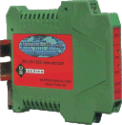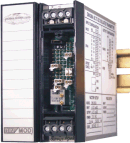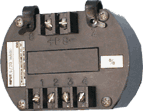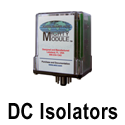The DR1920 Back-Up Pump Control is a compact DIN rail mounted unit used to monitor
a backup High-High Level Alarm in a tank or wet well and to start up to two pumps when the High-High Alarm switch closes.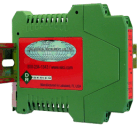
It prevent overflows in situations where the primary level control system fails.
When the High-High Alarm switch in the tank or well closes, the DR1920 closes a relay that starts Pump 1 and starts an internal Timer 1. When Timer 1 reaches its set time, and the High-High Alarm switch is still closed, Pump 2 is started.
Pump 1 and Pump 2 will run until the High-High Alarm switch opens. When the
High-High Alarm switch contact opens, Timer 2 is started and both pumps continue to run until Timer 2 reaches its set time.
If the High-High Alarm switch opens during the Timer 1 interval, Timer 2 is started when the High-High Alarm switch opens. Pump 2 is not started and Pump 1 will run until Timer 2 reaches its set time. Timer 2 is set by the user to lower the level ito the desired low level.
The DR1920 also has provisions to alarm on a switch opening.
ALARM SWITCH MONITOR
The DR1920 monitors the open or closed status of a switch contact that is already
wired into a control system. This switch may have any of several voltages that are
used to control the pump system. In addition, if the primary control system fails, the normal voltages may not be present.
The DR1920 is wired across the alarm switch contacts and uses a unique circuit
that measures the impedance present between the switch contacts.
When the DR1920 senses a low impedance, it begins its control function, regardless of any absence or presence of voltage across the switch contacts. This feature allows the
DR1920 to be wired in parallel across the switch contacts without regard to the
existing control system, permitting simple installation in existing systems.
For situations where the existing wiring prevents this circuit from being used, an
isolated contact must be provided. A second input, which requires an isolated contact or
open collector transistor (optical isolator) is also provided.
A Reset input is provided to stop the pumps and reset the timers. It requires a contact
closure or open collector transistor which will conduct. Since the Back Up Pump Control is used
only when there is a problem with the primary control, the digital alarm inputs, as
well as the reset inputs, are provided to allow the periodic exercising of the system
to verify functionality.


